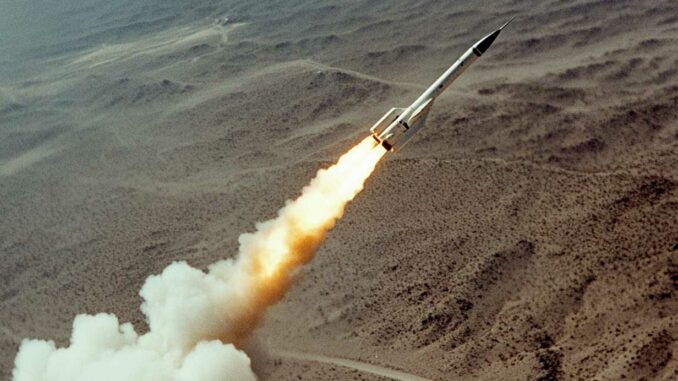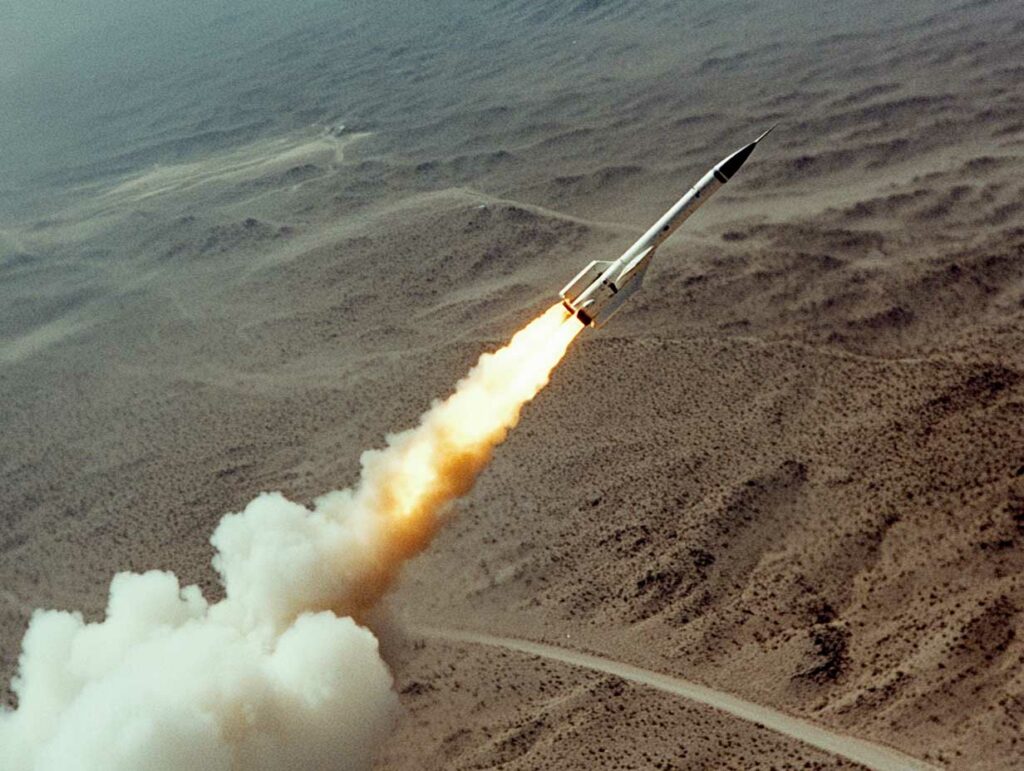
London and Berlin are developing a 2,000 km precision missile to strengthen European deterrence against Russian threats.
The United Kingdom and Germany have announced the joint launch of the development of a long-range precision strike weapon capable of reaching 2,000 kilometers, covering Moscow from Western Europe. The initiative is part of the Trinity House Agreement defense pact signed in 2024 and comes amid growing strategic imbalance with Russia, whose land-based ballistic capabilities surpass those of all European NATO members combined. The exact architecture of the missile remains undetermined—ballistic or cruise—but its objective is clear: to ensure long-range power projection while strengthening European strategic autonomy. No timetable for entry into service has yet been announced, but the ambition is to deliver an operational system in the 2030s.
A direct response to European strategic shortcomings
The program announced in Berlin by Defense Ministers Boris Pistorius (Germany) and John Healey (United Kingdom) is the first major bilateral cooperation between the two countries in the field of long-range missiles. It aims to fill a glaring capability gap within NATO in Europe: no European country, apart from Turkey, currently has a conventional land-based missile with a range of more than 300 kilometers.
Faced with Russia’s intensive deployment of Iskander ballistic missiles, Kalibr cruise missiles and long-range airborne delivery systems, the need for a symmetrical response is becoming urgent. This new program would aim to enable:
- strikes at over 2,000 kilometers,
- from British or German territory,
- with greater accuracy than current systems such as the British Storm Shadow (range of 560 km).
The idea of a missile capable of reaching Moscow from Western Europe marks a significant break with doctrine.
Ballistic missile or cruise missile: two possible options
The exact format of the future deep strike system has not been decided. Two options are being considered:
- a long-range cruise missile, inspired by the American Tomahawk, with stealth capability, autonomous navigation, and a subsonic or hypersonic trajectory;
- or a land-based ballistic missile, which is faster and more difficult to intercept but more visible to detection.
The technical challenges associated with these choices are significant. The United Kingdom has not developed a land-based ballistic missile since the 1960s, and Germany has never designed one. However, both countries have compatible launch platforms, notably the Typhoon, British attack submarines, and German Type 127 frigates, equipped with Mk 41 vertical silos, which are already compatible with the Tomahawk.
A missile carried on ships or submarines could therefore be favored, offering strategic flexibility, particularly for missions in the Baltic or Mediterranean.

Industrial and military ambition rooted in the Trinity House Agreement
This development is part of the Trinity House Agreement, signed in October 2024, which aims to intensify industrial defense cooperation between London and Berlin. Other projects are associated with it:
- the co-production of Sting Ray torpedoes for P-8 Poseidon maritime patrol aircraft;
- the joint manufacture of Boxer armored vehicles in the United Kingdom;
- the establishment of an artillery gun factory in the United Kingdom;
- enhanced integration of air defense systems to counter ballistic threats.
The precision strike missile is the most ambitious part of this agreement. It symbolizes the desire to provide Western Europe with an autonomous conventional deterrent capability against Russian systems.
Strategic competition with post-INF Russia
The end of the INF (Intermediate-Range Nuclear Forces) Treaty in 2019 has freed up the development of intermediate-range land-based missiles (500 to 5,500 km). The United States accuses Russia of violating this treaty with the 9M729 (SSC-8). Since then, Europe has found itself without a restrictive legal framework for the development of such weapons, paving the way for a new range race.
Russia is lining up:
- Iskander-M ballistic missiles (500 km),
- ship-based Kalibr missiles (up to 2,500 km),
- and Kinjal hypersonic missiles, capable of reaching 2,000 km at Mach 10.
The German-British initiative aims to reduce this technological and operational gap, particularly in Baltic defense and Black Sea containment scenarios.
A potential nuclear component in the background
The project does not specify the nature of the warhead, but a latent nuclear capability cannot be ruled out, particularly if the system were to contribute to European strategic deterrence.
Currently:
- The United Kingdom has nuclear weapons, via its Trident II D5 submarines, equipped with British nuclear warheads.
- Germany does not possess nuclear weapons, but participates in NATO’s nuclear sharing, with US B61 bombs.
Against a backdrop of questions about the US nuclear umbrella, some German leaders have been talking since 2023 about the need to reconsider European nuclear doctrine, potentially in cooperation with France or the UK.
The deep strike missile could therefore eventually include a dual option (conventional or nuclear), although this has not been officially confirmed.
Timeline and broader European coordination
The Anglo-German missile is expected to enter service in the 2030s, according to the British Ministry of Defense. It will possibly be linked to the European Long-Range Strike Approach (ELSA) initiative, launched in 2024 by France, Germany, Italy, and Poland, and later joined by Sweden and the United Kingdom.
ELSA also aims to develop a land-based missile with a range of 1,000 to 2,000 km, with similar objectives. The two programs could be merged or coordinated to avoid industrial duplication.
There is also an economic stake: developing such a missile would make it possible to:
- stimulate the European defense industrial base,
- create skilled jobs,
- and reduce dependence on US industry.
War Wings Daily is an independant magazine.